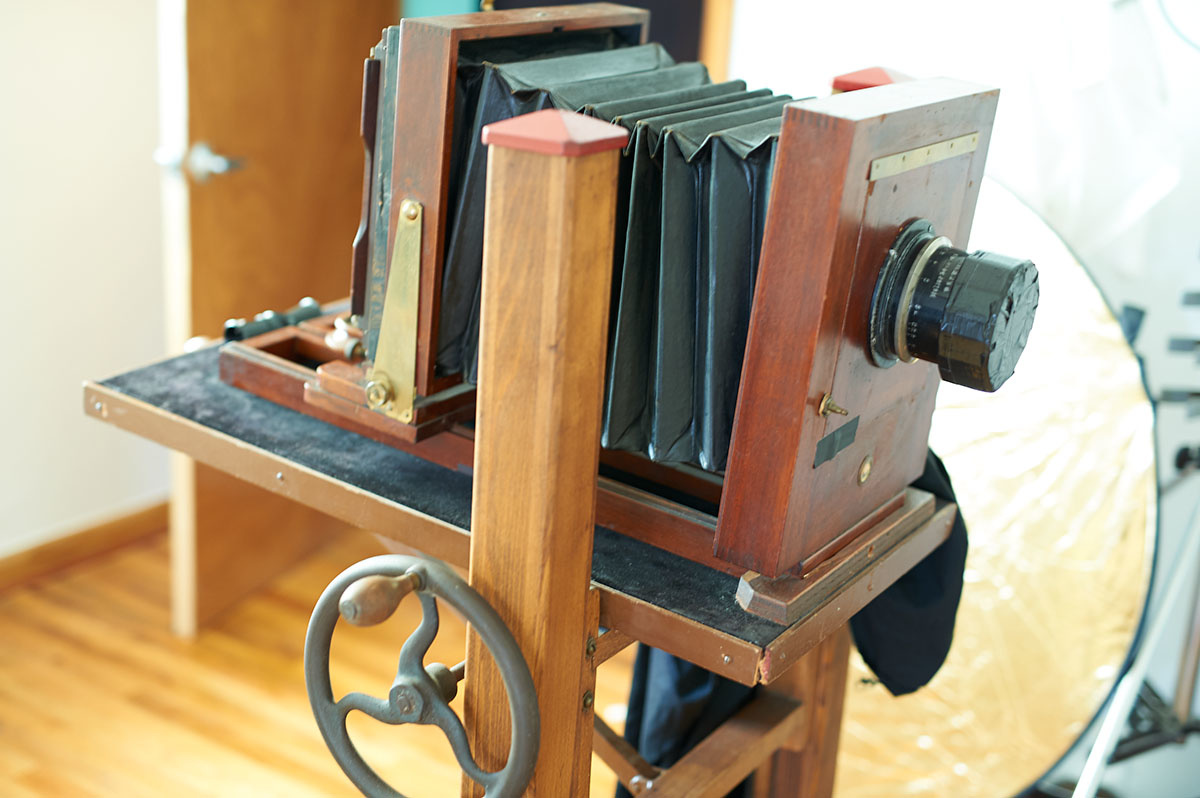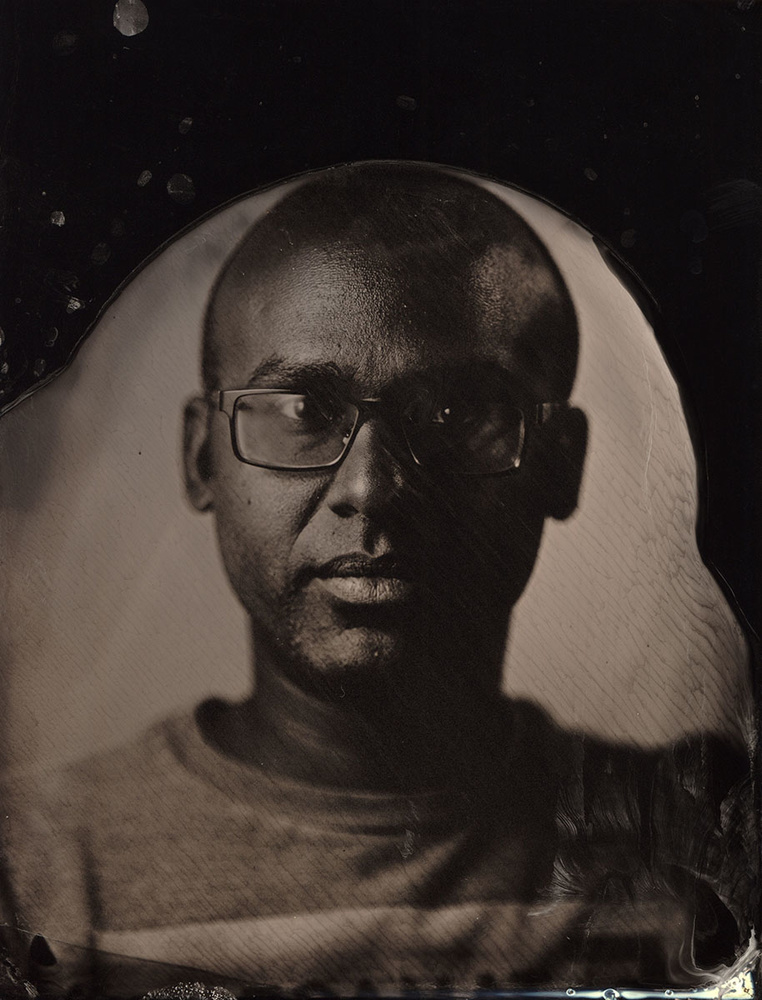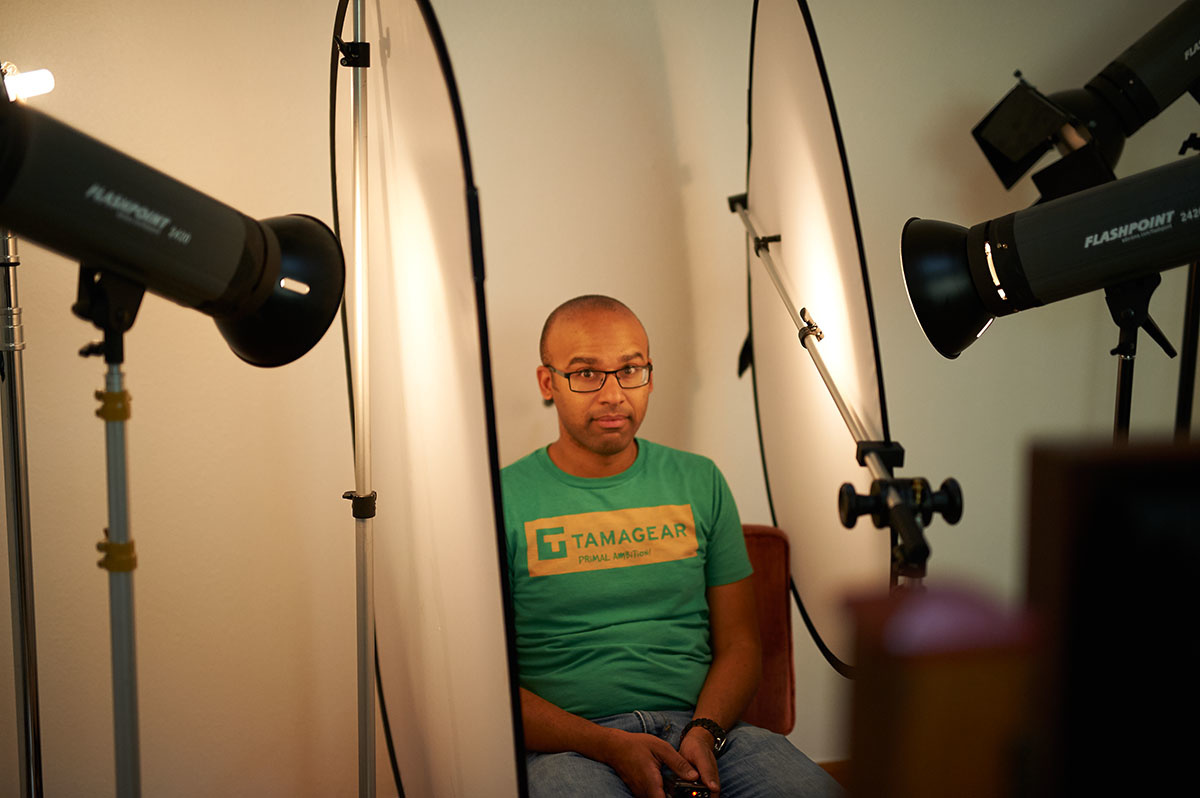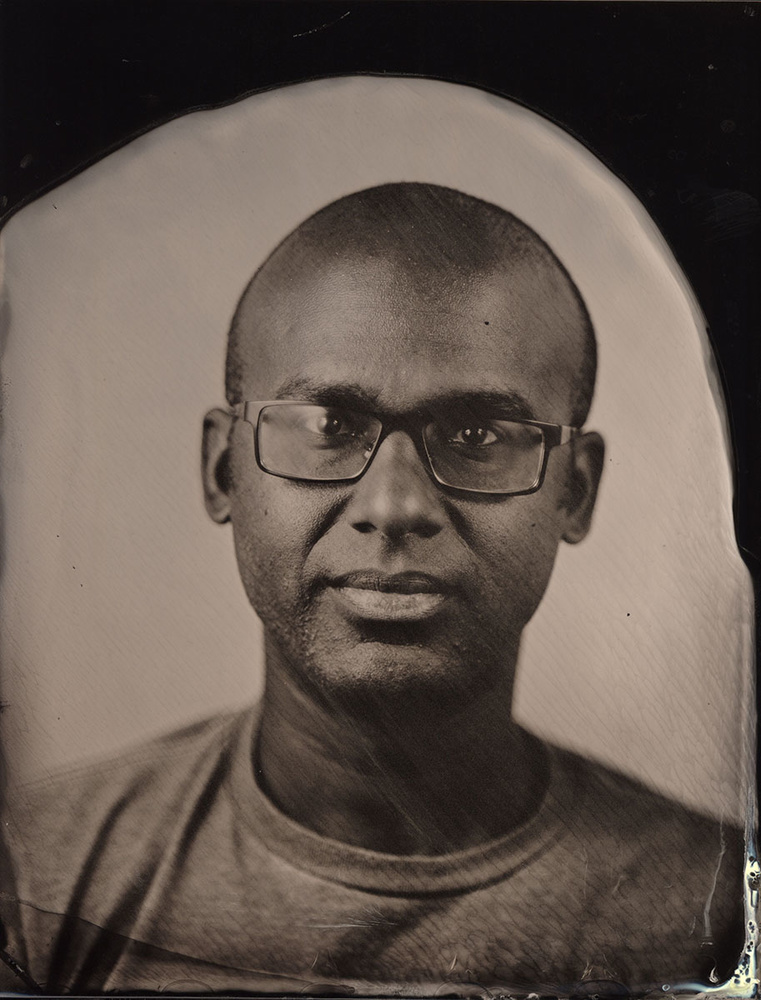In my research to come up with ideas for blog posts, I watch a lot of videos. A few months ago I came across a few videos about the wet plate collodion process and I was hooked! The results are so unique that I just had to participate in it myself.
Collodion Process in a nutshell
For those who don’t know, the collodion process is one of the earliest forms of photographic imaging, involving preparing glass or metal plates with a solution, placing the plate in a camera, taking the photo, removing the plate, then developing and fixing the image on the plate. All of this has to happen in less than 10 minutes. Sounds simple enough, right? Here’s more on the process if you want some specifics. Yeah, clear as mud…

A wet plate collodion portrait by Patrick Andrade

A wet plate collodion portrait by Patrick Andrade

A wet plate collodion portrait by Patrick Andrade
So let’s back up a bit. My brilliant idea was to attempt to use my style of lighting with the collodion process, merging a more contemporary style with an antiquated method. No problem!
Using an old connection
Well as luck turns out, I remembered that I knew a collodion photographer! My wife and I had our portrait taken at the Denver County Fair a year ago by Patrick Andrade, a photojournalist and war photographer turned owner and operator of Relic Fine Art Photography. I called him up and told him about my idea. We were a go!

The beast! 8x10 camera modified by Patrick Andrade

A Hans-eyed view of my photographer and teacher

Me in all my upside down and reversed glory
F90? What do you mean that's not enough??
Patrick graciously showed me his studio, the classic 8x10 large format camera he’s modified to take his portraits with, and his process overall. I was dumbfounded. I felt like a complete amateur. I expected to be able to use my photographic knowledge and apply it to this old process. Not quite. Here’s why: You need an absolutely INSANE amount of light to make this work. I don’t know how the original artists using the technique ever even knew they were on to something, because correct exposures take seconds in bright sunlight. That’s seconds, plural. I use studio strobes. However, while I'm used to setting up my lights and modifiers wherever I want, I was constrained by the needs of the process. In order to get enough light on a subject using flashes, the light needs to be right on them. My strobes are 640 W/S in power and I routinely will take portraits in bright sunlight with them, overpowering the sun. I threw a parabolic umbrella on one, turned the power all the way up, and we tried an exposure.

F64 at ISO 100. Plenty of light, right?? Not even close.

Patrick prepares a plate for exposure
Nada. Zip. Nil. Bupkis. Just a cloudy mess on a piece of metal.

The first exposure on Wet Plate Collodion. Exquisite tones of nothing.
I actually had the gall to ask if his chemicals were working. I think he might have snorted with laughter. All of my knowledge and experience had just been unceremoniously thrown out the window. Obviously, this shoot was destined to turn into a learning experience for me rather than creating anything meaningful, but I was loving it!
Next, we tried using his 1200 W/S flash and putting the PLM umbrella as close as possible to me. “I think I see my forehead!” Exciting!

That's a good lookin forehead! And nose, of course.
So now what? We need more power! I’m sure I looked as manic as Gene Wilder in Young Frankenstein, but I didn’t care. I was going to figure this out.
We next tried shooting bare bulbed with the 1200 W/S strobe around 18 inches from my face through a diffuser. The light meter actually said "e.o." I'm not sure what that means but I'm saying it means Extremely Outrageous! I held a reflector on the other side of my face for fill. Now we’re getting somewhere.

Now we're getting somewhere!
We then added a strobe on the other side, diffused at half power, for fill. Eureka! It looks great! Why am I so dark? Which brings us to another eccentricity of the process: It only records UV/Blue light. WHAT? Although my skin tone in real life is of the caramel variety, on wet plate it will always read as dark chocolate. To see the effect, just go into Photoshop, take your favorite image, turn it black and white in the channel mixer and only look at the blue channel. Blue skies vanish, warm colors go black, and cool colors go white. It's truly amazing to me the amount of artistry and patience that goes into this medium. Can you imagine a process where after getting your timing right, chemicals prepared, keeping your subject absolutely still in a long exposure in the sun or using a stupid amount of strobe light, only THEN can you concentrate on doing something interesting with your subject? And ALL within 10 minutes? Insanity. But I respect those who've found a way to do it and do it well.

The "winning" setup.

Success!
The purpose of this article isn’t to be a primer on wet plate collodion. It’s to illustrate one point: It’s ok to suck at something! Learning something so new and yet fascinating was invigorating. I may just make a point to learn about a new process every once in a while to keep my passion going for photography. It’s so easy to get stuck in the day to day grind of what we normally do that we forget there’s a whole other world of photography out there, most of which is completely different from what we know. Go take a class. Network with landscape artists if you’re a portrait person. Hit up a photojournalist. Tag along with a macrophotography specialist and chase down some bugs! You’ll be surprised what you can learn.
Many thanks to Patrick Andrade for his time and patience. All wet plate images are property of Patrick Andrade/RELIC Fine Art.







Cool. This is why I love photography,. You can ALWAYS learn something new.